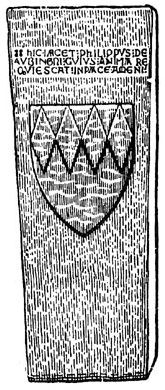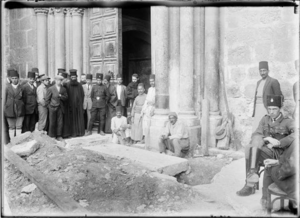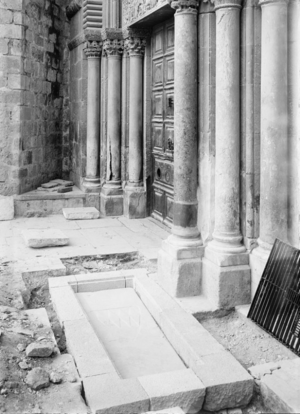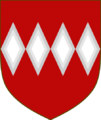Philip d'Aubigny facts for kids
Quick facts for kids
Philip d'Aubigny
|
|
|---|---|
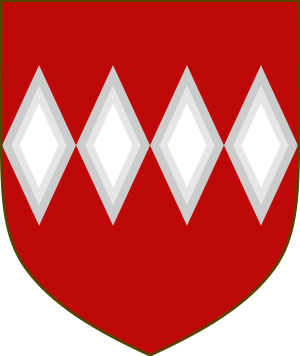 |
|
| Coat of arms | Arms of Daubeney: Gules, four fusils conjoined in fess argent |
| Born | 1166 Ingleby, Lincolnshire |
| Died | 1236 Kingdom of Jerusalem |
| Buried | Jerusalem |
| Noble family | D'Aubigny |
| Father | Ralph d'Aubigny |
| Mother | Sybil Valoignes |
Philip d'Aubigny (born around 1166 – died around 1236) was a brave knight and an important royal official. He was one of five sons of Ralph d'Aubigny and Sybil Valoignes. His family came from Saint Aubin-d'Aubigné in Brittany, France. Philip was the lord of several important lands in England. He also served as the Keeper of the Channel Islands.
Contents
Philip d'Aubigny's Life and Career
Philip d'Aubigny was an important knight who served the English kings. After his father passed away, his older brother Ralph inherited most of the family lands. However, Ralph later joined the French side in 1205. Philip and his other brothers chose to serve Robert de Breteuil, a powerful earl. Philip was given the manor of Waltham for his service.
Role in Magna Carta and Wars
Philip was present when the famous Magna Carta was signed. This important document limited the king's power. Philip was even mentioned in the document itself. He played a key role in the First Barons War, leading the king's forces in parts of England.
Philip also fought in major battles. He took part in the Battle of Lincoln in 1217. Later that same year, he commanded a ship during the Battle of Sandwich. These victories helped the king's side win the war.
Tutor to King Henry III
After the war, Philip was chosen for a very special job. He became the tutor, or teacher, for the young King Henry III. For his important role in educating the king, Philip was given more lands. These included the manors of Chewton Mendip and South Petherton in Somerset, and Bampton in Oxfordshire.
Death and Burial in the Holy Land
In 1235, Philip d'Aubigny went on a crusade to the Holy Land with his brother Oliver. Sadly, Philip died there about a year later, in 1236. He was buried in front of the Church of the Holy Sepulchre in Jerusalem.
Discovery of His Tombstone
In 1925, Philip's tombstone was discovered. It was in excellent condition. The stone showed his family crest and had a message written in Latin. To protect it from people walking over it, the tombstone was carefully lowered slightly below the floor. It was then covered by a metal grate. This way, it could still be seen but would not be damaged.
Family and Legacy
Philip d'Aubigny did not have any children of his own. Because of this, his lands in South Petherton and Lincolnshire went to his nephew, Ralph d'Aubigny.
Philip was the son of Ralph d'Aubigny and Sybil Valoignes. His grandfather was William d'Aubigny. Philip had several brothers and sisters, including Oliver d'Aubigny and Ralph d'Aubigny. He was also a cousin to William d'Albigny, who was one of the twenty-five nobles who made sure the Magna Carta was followed in 1215.
The d'Aubigny family kept their lands in Ingleby and South Petherton for a long time. They owned them until 1554, when the lands were given to John Bourchier, the Earl of Bath.
Images for kids


